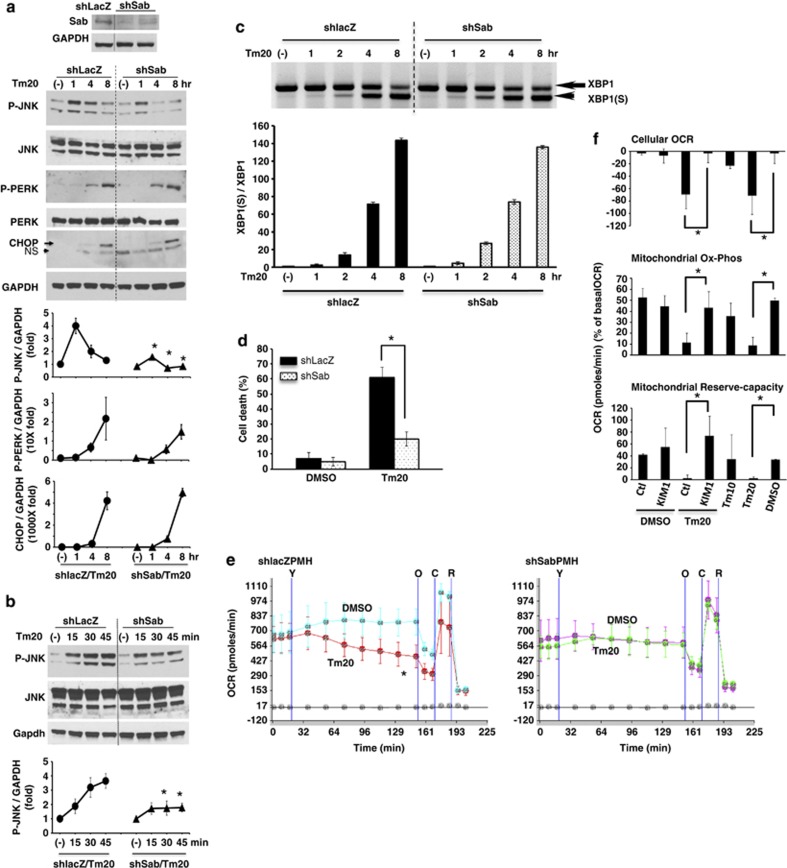Figure 3.
Effect of knockdown of Sab or SabKIM1 peptide on ER stress induced sustained P-JNK activation, PMH death and cellular and mitochondrial respiration. (a) PMH were isolated 10 days after tail-vein injection with adenoviral shlacZ or shSab. shSab efficiently depleted Sab protein. Knockdown of Sab suppressed sustained JNK activation (1–8 h); *P<0.05 versus shlacZ, N=5 experiments. The increase of P-PERK activation and CHOP expression were not changed by knockdown of Sab. (b) Knockdown of Sab blunted JNK activation at 30 and 45 min after tunicamycin treatment but not initial activation at 15 min. (c) XBP1(S) (spliced form) was observed at same time after tunicamycin treatment of PMH without or with Sab knockdown. (d) Knockdown of Sab inhibited tunicamycin-induced cell death by SYTOX-green assay; *P<0.01 versus shlacZ, N=5 experiments. (e) Tunicamycin inhibition of OCR was prevented by knockdown of Sab during 2 h continuous tracing after tunicamycin injection; *P<0.05, N=5 experiments. Tunicamycin 20 μg/ml injection was marked as ‘Y'. Oligomycin (O), CCCP (C), Rotenone (R). (f) Wild type PMH cellular OCR, mitochondrial oxidative-phosphorylation, and mitochondrial reserve oxidative capacity were measured for 2 h after injection of DMSO or tunicamycin with control scrambled peptide (Ctl) or SabKIM1 peptide (KIM1) 10 μM; *P<0.05 Ctl peptide versus KIM1 peptide or Tm20 versus DMSO, N=5 experiments. The data are presented as mean±S.D. Mean of five wells of each experiment. (See also Supplementary Figure S2)

